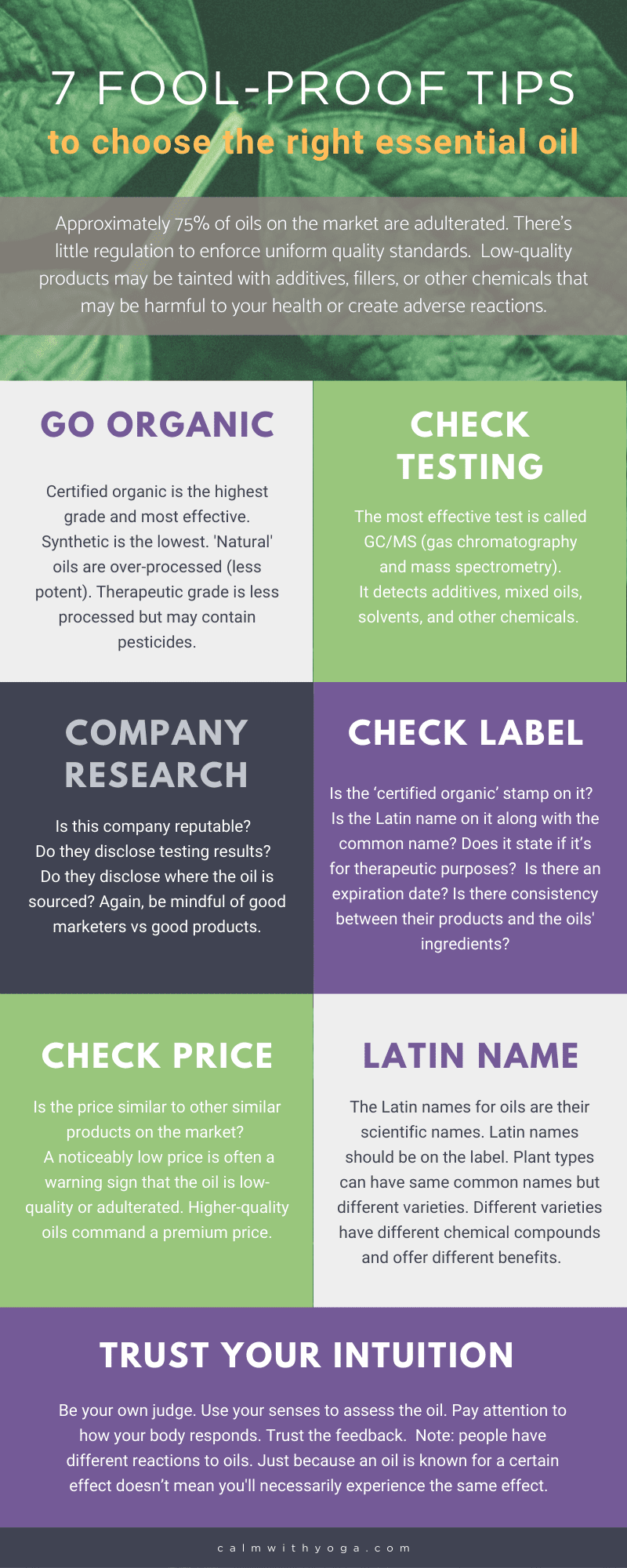What are essential oils?
Essential oils are highly concentrated plant extracts that come from tree resin and bark, roots, stems, leaves, flowers, seeds, nuts, and fruit.
It’s believed that EOs contain many beneficial active compounds that interact with the body in ways that promote healing, well-being, and balance.
Many of the world’s greatest cultures and healing arts have been using essential oils (EOs) in some form for hundreds of years because of their medicinal properties.
Recently, there’s been increased interest in the use of oils and hydrosols (flower waters) as a way to boost the immune system, reduce inflammation, calm anxiety, improve sleep, manage allergies, and alleviate headaches.
Are EOs safe for dogs?
If EOs can be beneficial and healing for humans does that mean that they provide similar benefits to cats and dogs?
Well, some would say the answer is both yes and no.
Some veterinarians suggest abstaining from using EOs on your dog entirely, and other holistic veterinarians actually use EOs as part of some of their treatment plans.
When it comes to dogs and EOs, the important thing to remember is this:
Certain EOs, when used correctly, with caution and care, can provide healing and well-being benefits to your pup such as flea and tick prevention, managing fungal and ear infections, skin conditions, arthritis, and anxiety. (We’ll share with you six aromatherapy uses for dogs at the end of this post.)
On the other hand, certain essential oils can cause irritation and reactions in dogs, and some are downright toxic.
This is because a dog’s liver isn’t able to metabolize (break down) the compounds in EOs in the same way that human bodies can.
It’s important for dog owners to note that extreme care should be used when exposing pets to EOs.
Essential oil diffusers:
A dog’s sense of smell is much more potent than ours so keep that in mind when diffusing EOs at home.
Incorrect usage and dosage of EOs can impact a dog’s respiratory and central nervous system.
It can also cause changes in behavior.
Topical application:
EOs are potent and a little goes a long way.
The active compounds in EOs are rapidly absorbed into the skin.
The topical application of EOs should only be done with your vet’s approval and always with a carrier oil like coconut oil.
Always perform a patch test before using oils to avoid skin irritation.
You can apply a drop of oil with 2-3 drops of coconut oil and rub it on your pup’s paws and monitor any reactions for 24 hours.
Remember – dosage and amounts matter and your dog is much more sensitive to these oils than you.
Proceed with caution and think of safe dosages as you were applying to a baby.
Use only 1-3 drops of essential oil maximum at a time each use and watch out for any irritations or adverse reactions.
Puppies, elderly dogs, and dogs with pre-existing conditions like liver disease and respiratory problems are more at risk of having adverse reactions to EOs.
Unsafe EOs to avoid
- Tea tree oil (melaleuca)
- Wintergreen oil
- Oregano oil
- Thyme oil
- Pennyroyal oil
- Sweet birch oil
- Ylang-ylang oil
- Pine oils
- Peppermint oil
- Yarrow oil
- Citrus oils (lemon, orange, grapefruit, bergamot)
- Clove oil
- Cinnamon oil
Symptoms of essential oil poisoning
- Drooling or increased saliva production
- Tremors/ muscle tremors
- Low body temperature
- Difficulty breathing/ respiratory issues
- Liver failure/ liver damage
- Fast breathing rate
- Trouble walking
- Skin rashes or redness
- Changes in eating and/or sleeping patterns
- Fatigue and lack of energy
- Not wanting to play
- Digestive issues like vomiting, diarrhea, or constipation
If you apply EOs topically to your dog make sure they cannot lick it off as ingesting it can cause gastrointestinal upset.
What to do if you think your dog is showing symptoms
Call your vet immediately as soon as you notice your dog showing any of the signs and symptoms above.
You can also call the Pet Poison Helpline at 1-855-764-7661 and the ASPCA Animal Poison Control Center at 888-426-4435.
As a pet owner, you should always have these numbers handy and ready to use on your phone.
Safer EOs for your pup
- Frankincense
- Lavender
- Rosemary
- Clary sage
- Roman Chamomile
- Cedarwood
- Lemongrass
- Helichrysum
These are some of the best essential oils for dogs.
Again, remember that EOs are very concentrated and potent.
Only use 1-3 drops maximum at a time.
Always dilute with a carrier oil.
Check with your vet first before using these safer oils.
Monitor your dog’s reactions after introducing new oils and stop use immediately if adverse symptoms occur.
Just because an oil is thought to be safe doesn’t necessarily mean that your dog will tolerate it.
How to choose the right high-quality EOs for your pup
Quality matters when it comes to EOs, especially if you’re using it for medicinal or therapeutic purposes.
Make sure you’re choosing the right EOs by following these 7 tips:
- Look for certified organic therapeutic grade essential oils.
- Check that testing has been done.
- Research the company.
- Check the label.
- Check the price.
- Check the Latin name.
- Check in with yourself (and with your furry friend.)
5 Aromatherapy Uses for Dogs
Fleas & ticks
Add 1-2 drops of either lemongrass, cedarwood, lavender, or clary sage to your dog’s shampoo.
Inflammation/Arthritis
Create your own DIY blend by adding:
- 2 tablespoons of fractionated coconut oil or jojoba oil
- 1 drop of rosemary
- 1 drop of frankincense
- 1 drop of roman chamomile
Rub or gently massage the affected area or joint and also the base of the ears.
Do not put near the dog’s face or eyes.
Ear infection
Mix 2 tablespoons of olive oil or fractionated coconut oil with 1 drop of lavender oil and 1 drop of roman chamomile and gently massage a small amount of this blend to the ears and pink inner part of the ear.
Fungal infection
Mix 1 tablespoon of coconut oil, which is antifungal, with 2 drops of rosemary and 1 drop of lemongrass, both of which are anti-bacterial and antifungal.
Gently apply it to the affected area in the morning and in the evening.
Anxiety/Fear
Diffuse 3 drops of lavender and 3 drops of Roman chamomile for your pup or simply create a calming rub blend with 1 tablespoon of coconut oil and 1 drop of lavender and 2 drops of chamomile and gently massage their belly, paws, and base of the ears.
Insect repellent
Add water to a spray bottle and add 3 drops of lemongrass oil and 3 drops of lavender essential oil and spray onto your dog’s coat as needed.













